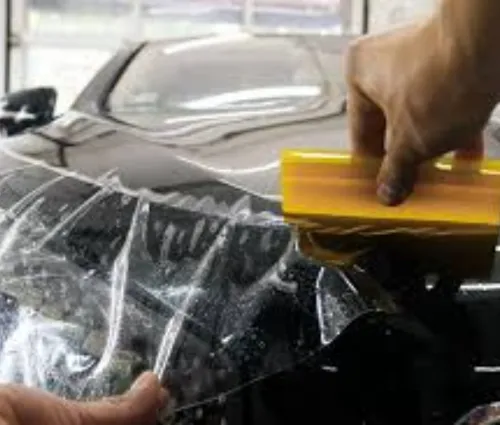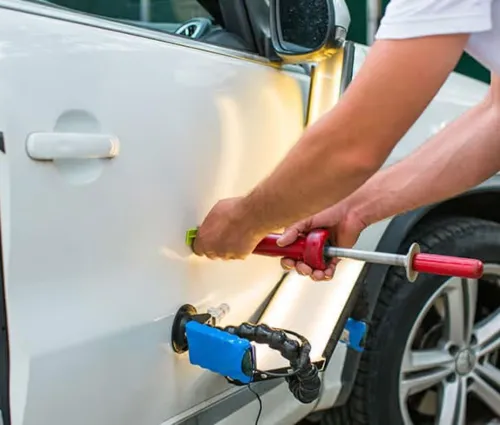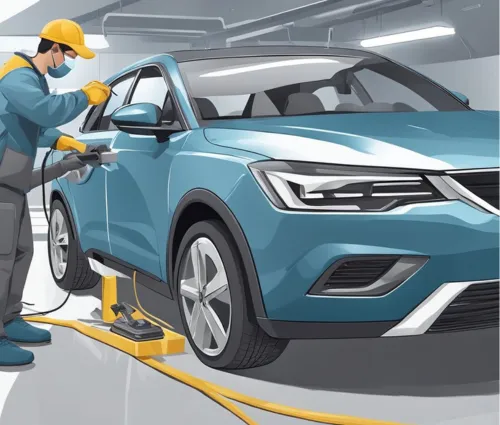Essential paint warranty advice for drivers
Why PDR Protects Your Vehicle's Valuable Factory Paint

FSDAVCFEBFEVSDDVFSD

FSDAVCFEBFEVSDDVFSD

FSDAVCFEBFEVSDDVFSD
Why PDR Protects Your Vehicle's Valuable Factory Paint

Every new car rolls off the line with a factory paint warranty promising the finish will not peel, bubble, or rust for a set number of years. It covers defects in materials and application, but only while the original coating remains intact. Drivers often assume that any body repair is fine as long as the color matches, yet hidden clauses say otherwise. Read the fine print carefully.
Most manufacturers void paint warranty once a panel is sanded, filled, or resprayed outside their plants. Repainting changes film thickness and can trap solvents that later crack clearcoat, so warranties exclude it. If hail or a door ding forces traditional body work, the coverage disappears for that area, leaving future chips or fading solely on the owner’s dime. That risk rises for leases.

How Repainting Can Void Your Original Paint Warranty
Body shops that rely on fillers and new paint must first sand the damaged panel to bare metal, removing the corrosion-proof factory electrocoat and primer. They spray polyester surfacer, block it smooth, and add color along with a clear coat. No matter how skilled the painter is, this multilayer stack differs in thickness and chemistry from what the automaker applied in controlled ovens.
Because the refinish process happens at room temperature, solvents take days to escape. During that time, the surface stays soft and slightly porous. Road salt, tree sap, or bug acids can embed themselves deep in the film, causing discoloration months later. When that happens, dealerships point to the repair invoice and rule the damage outside warranty obligations.
Automakers also use paint-thickness gauges during warranty inspections. If the reading shows extra microns on a door or hood, the claim is instantly denied because aftermarket paint is obvious. Even if the rest of the vehicle still qualifies, that single repaired panel loses coverage forever. For drivers planning to keep or trade, that denial can be costly.

How PDR Repairs Dents While Leaving Paint Untouched
Paintless dent repair uses precision rods and glue-pull tabs to massage metal back to shape from behind the panel. Because technicians never sand, fill, or spray, the factory primer and clearcoat stay exactly as they left the assembly plant. The repaired area matches surrounding panels because the original pigment, metallic flake, and UV-resistant clear remain in place.
Modern PDR lights cast crisp lines across the surface, letting the specialist read even minute highs and lows. By gently pushing or lifting at the center, then tapping down crowns around the dent, they restore metal memory without stretching the skin. The process happens at room temperature and takes hours, not days, so no curing chamber or solvent flash-off time is required.

Because the paint surface is untouched, electronic thickness gauges still read factory specification across the panel after PDR. That means service departments cannot detect the repair visually or with tools. If corrosion or peeling arises within the warranty window, the automaker honors the claim exactly as if the dent never happened.
Warranty-friendly dent repair is valuable not just for owners but also for dealers. Trade-in managers look for paint gauge inconsistencies when valuing vehicles. If readings stay original, they can list the car as “no paintwork,” a desirable note that raises resale offers. Choosing PDR now may return several hundred dollars at sale time, offsetting most or all of the repair cost.
Leasing companies apply even stricter standards. Their inspectors measure each panel and deduct fees for repaint indicators regardless of color match. Drivers who correct door dings with conventional filler often pay penalties on turn-in day. By opting for PDR, lessees avoid those surcharges and keep the security deposit intact. The method also maintains mileage of paint protection plans many finance offices sell. Dealership service managers confirm that factory-paint vehicles sell faster, so they reward pristine surfaces with quicker appraisals and streamlined paperwork. Buyers notice the difference during lot walks.
When PDR decisively outperforms traditional body filler repairs
Small hail dents, grocery cart dings, and gentle bumper kisses are classic PDR candidates. The metal isn’t stretched, paint remains intact, and access holes exist behind trim or liners. Skilled technicians can reach the low spot, work metal memory, and restore contour in under an hour for many panels, all while the customer waits in the lobby.
Moderate creases along body lines also respond well when addressed quickly. As long as the finish hasn’t cracked, a trained specialist can recreate the original crease with tap-down tools and polish away micro scuffs. This saves owners from repainting high-visibility areas like doors or quarter panels, keeping warranty protection and factory orange-peel texture exactly matching neighboring sections.
Even larger dents on aluminum hoods, common on trucks, can be fixed with glue-pull techniques that lift the panel outward rather than push inward. The adhesive tabs snap cleanly off once metal relaxes, leaving zero paint disturbance. After final blending and light buffing, electronic gauges still show factory thickness. That result keeps the hood eligible for corrosion coverage year after year.
Real Local Warranty Success: Paint Saved Through PDR
Jordan purchased a new midsize SUV last spring and caught a baseball-sized hailstone two weeks later. Rather than file through his insurer’s preferred body shop, he visited Dentex Midwest for PDR. The shop restored six dents in a day, preserving the factory pearl white finish.
Three months afterward, Jordan’s dealer performed a customary paint-thickness scan during an oil change. Readings fell exactly within manufacturer spec, so his warranty stayed active. The service advisor even noted the absence of paintwork on the vehicle’s service record, adding value when Jordan plans to trade in the future.


A second client, Maria, drives a leased sedan. She chose PDR for a parking lot crease. At lease-end inspection, the finance company found no refinish layers, preventing a $500 wear-and-tear fee and confirming that her corrosion coverage remained still fully valid.
These stories highlight a simple principle: keeping manufacturer paint untouched safeguards more than appearance; it protects your wallet. Warranty transfers to the next owner and supports higher resale offers because buyers trust original coatings over aftermarket work. Choosing paintless dent repair allows you to fix damage quickly while maintaining brand coverage for corrosion, fading, and clear coat delamination. That peace of mind is especially important for residents who face hail every spring yet intend to keep their cars for the full warranty term or beyond. It spares leased drivers end-of-term bills.
Quick Paint Warranty Preservation Checklist for Every Driver
Confirm the shop offers true paintless dent repair, not conventional body filler masked as “spot repair.” Ask to watch an in-process job so you can see rods and light boards in use and verify no sanding or spraying occurs. Genuine PDR means the technician reverses damage from the backside or with glue-pull only.
Request a written guarantee that paint readings will match factory specification after repair. Reputable providers include these PDR vs repainting assurances along with coverage against cracks caused by their work. Keep the paperwork with your maintenance booklet, ready to show dealerships if corrosion appears during the warranty period.
Ask whether the technicians hold current PDR certifications and have experience with your vehicle’s material, especially if it uses aluminum panels. Confirm the facility carries garage keepers insurance and that any necessary trim removal will follow manufacturer procedures. Finally, document the vehicle before and after service with clear photos and retain your electronic estimate. These steps create a trail showing no repaint occurred, so if a future dealership dispute arises, you can demonstrate warranty-friendly dent repair was performed by a qualified Missouri shop. This evidence protects resale value and keeps factory coverage active for the next owner well beyond.

Dentex Midwest
Professional Hail Repair & PDR
Stay Up-to-date With Our Content
Subscribe to learn more about our mission!
Stay Up-to-date With Our Content
Subscribe to learn more!
Contact Info
Service Hours
Social Media
Home
Services
Service Areas
Blog
About
Contact
Contact Info
Service Hours
Mon - Fri: 8:00 am – 6:00 pm
Saturday: by Appointment
Sunday: Closed
Social Media

Licensed, bonded, & insured